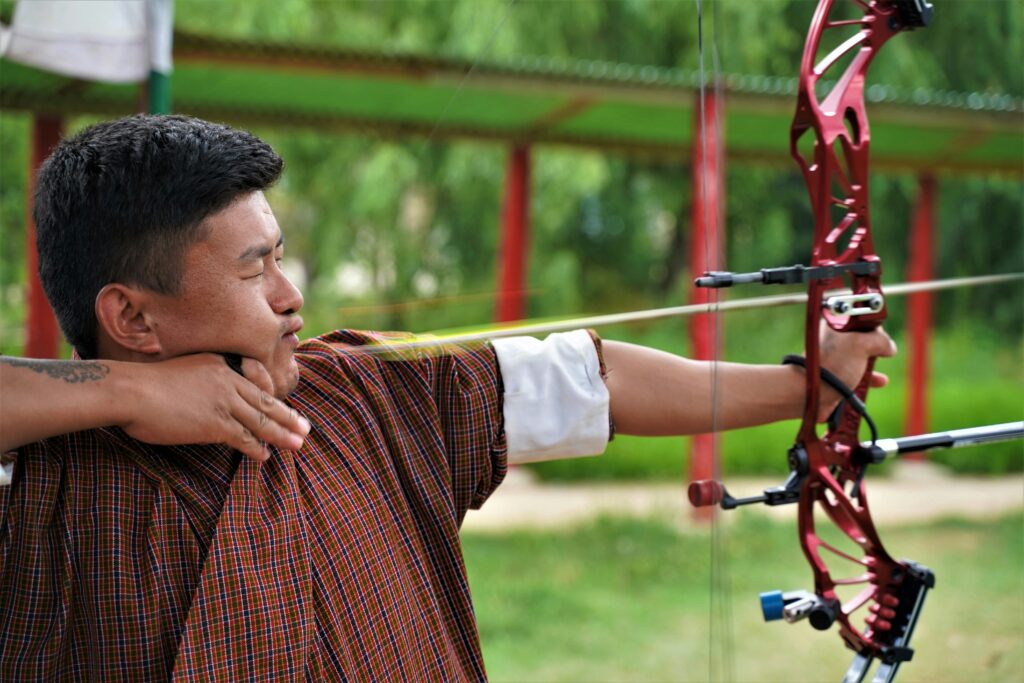The science of archery: How arrow dynamics affect your shot
Archery is often seen as a sport of precision and focus. For many beginners, it’s all about pulling back the bowstring, aiming, and releasing the arrow. But the key to becoming a skilled archer lies in understanding the science behind the shot. One of the most critical aspects of this is the dynamics of the

Archery is often seen as a sport of precision and focus. For many beginners, it’s all about pulling back the bowstring, aiming, and releasing the arrow. But the key to becoming a skilled archer lies in understanding the science behind the shot. One of the most critical aspects of this is the dynamics of the arrow. The way an arrow flies through the air is influenced by a combination of factors, from the material it’s made of to the mechanics of the bow itself. In this article, we’ll dive into the science of arrow dynamics, and how factors like arrow spine, weight, fletching, and bow mechanics impact your shot.
Understanding these elements can help you improve your shooting accuracy and consistency:
- Arrow flight: Factors that affect the path of your arrow
- Aerodynamics: The role of fletching in stabilising arrows
- Bow mechanics: How the bow affects arrow trajectory
- Understanding the dynamics: A complex factor in archery

Arrow flight: Factors that affect the path of your arrow
When you release an arrow, its flight path is determined by a number of factors. While it may seem like the only thing that matters is the force you apply when you release the bowstring, several other components play a role in how the arrow behaves once it’s airborne.
Arrow spine
The spine of the arrow refers to its stiffness, which is crucial for determining how it flexes during flight. If the arrow is too stiff or too flexible for the bow you’re using, it won’t fly straight or accurately. An arrow that’s too stiff will not bend enough when shot, causing it to veer off target. On the other hand, an overly flexible arrow will bend too much and can spin out of control. Getting the right spine is essential for achieving a consistent and accurate shot. The spine of the arrow is usually measured in terms of deflection, which is the amount the arrow bends under a certain weight. Archers typically match the spine of their arrows to the bow’s draw weight for optimal performance.
Arrow weight
The weight of the arrow is another critical factor in its flight. Heavier arrows tend to be more stable and less affected by wind, but they require more force to propel them and tend to lose speed faster. Lighter arrows, on the other hand, are faster and can reach the target quicker but may be more susceptible to wind drift and less stable in flight. The ideal arrow weight depends on the shooting distance and the type of archery you’re practising. For example, target archers often use lighter arrows for speed and precision, while bowhunters may opt for heavier arrows to ensure the arrow has enough power to penetrate the target.
Arrow material
Arrows are made from a variety of materials, including wood, aluminium, and carbon. Each material affects the flight characteristics in different ways. Wooden arrows, though traditional, tend to be less consistent in terms of spine and weight, making them more difficult to shoot accurately. Aluminium arrows are more durable and offer more consistent performance, but they’re typically heavier than carbon arrows. Carbon arrows, on the other hand, are lightweight, strong, and provide excellent consistency. The choice of material depends on personal preference, budget, and the type of archery being done.

Aerodynamics: The role of fletching in stabilising arrows
Once the arrow is in flight, the fletching – the feathers or plastic vanes attached to the back of the arrow – plays a crucial role in stabilising the arrow’s flight path. Fletching works by creating drag and aerodynamic lift that helps to keep the arrow stable and prevents it from wobbling or tumbling in the air. Without proper fletching, arrows would be highly susceptible to wind and would likely fly unpredictably.
The size, shape, and orientation of the fletching affect how much stability it provides. Larger fletching creates more drag and stabilises the arrow more effectively, but it also slows the arrow down. Smaller fletching reduces drag and can make the arrow fly faster, but it may not stabilise the arrow as well, particularly at longer distances. Some archers use a combination of different fletching types to fine-tune their arrow’s flight. Additionally, the number of vanes – typically three or four – can also influence stability, with three vanes often being a good balance between stabilisation and speed.
Bow mechanics: How the bow affects arrow trajectory
While the arrow is the primary projectile, the bow itself plays an equally important role in determining the trajectory of the shot. The bow’s design and the force with which it propels the arrow can significantly impact the accuracy and consistency of your shots.
Draw weight
The draw weight of the bow refers to the amount of force required to pull the bowstring back to its full draw length. A higher draw weight means that more force is applied to the arrow when it is released, which results in higher arrow speed. However, a bow that’s too heavy for you can make it difficult to maintain accuracy, as it may lead to fatigue or improper form. Conversely, a bow with too light a draw weight may not provide enough power to shoot the arrow effectively, causing the shot to lack the required speed and energy to reach the target. Finding the right balance in draw weight is key to a consistent shot.
Bow design
The design of the bow itself also affects the arrow’s flight. Recurve bows, for example, store more energy than longbows, which results in faster arrow speeds. Compound bows, with their system of pulleys and cams, provide even more energy efficiency, making them ideal for longer shots with more precision. The design of the bow affects how the energy is transferred to the arrow, and choosing the right design is crucial for optimising arrow flight and ensuring accuracy.
Arrow release
The way you release the string also has a huge impact on arrow trajectory. A clean, smooth release will help the arrow fly true, while a jerky or inconsistent release can cause the arrow to veer off course. Practising a controlled and consistent release is key to maintaining accuracy, as even the slightest movement at release can affect the arrow’s flight path.
Understanding the dynamics: A complex factor in archery
The dynamics of an arrow are complex, but understanding how factors like arrow spine, weight, material, fletching, and bow mechanics affect your shot can make a big difference in your shooting accuracy. Archery isn’t just about pulling back a string and hoping for the best – it’s about mastering the science behind the shot and fine-tuning your equipment to match your shooting style.
“A bow and arrow are more than just tools for shooting. They are symbols of patience, focus, and mindfulness.” – Unknown Author
Experimenting with different arrows and bow setups, and understanding how each factor impacts your shot, will help you improve your consistency and accuracy over time. So, next time you’re at the range, take the time to experiment with your equipment – it might just be the key to improving your archery performance.